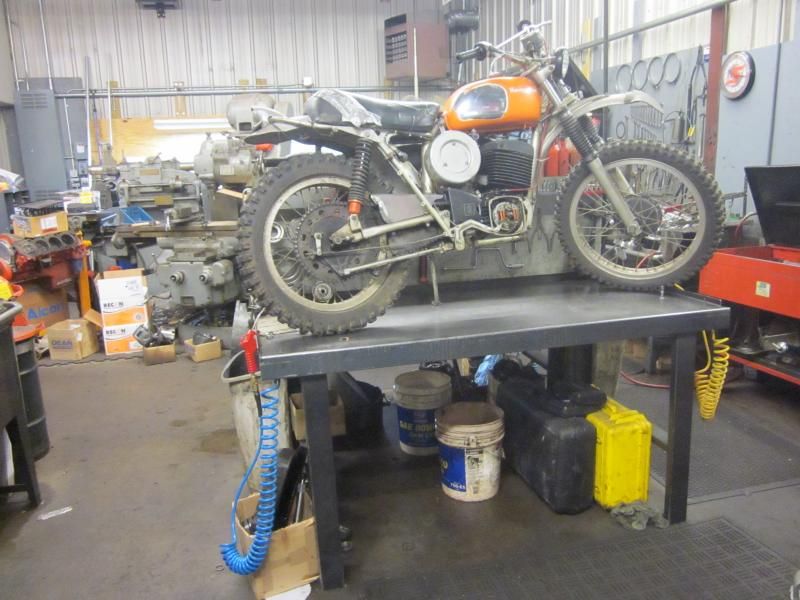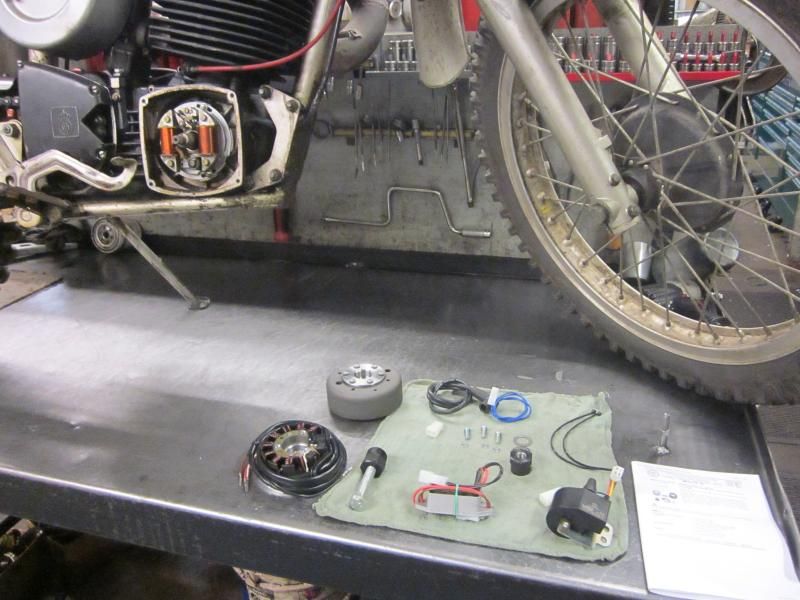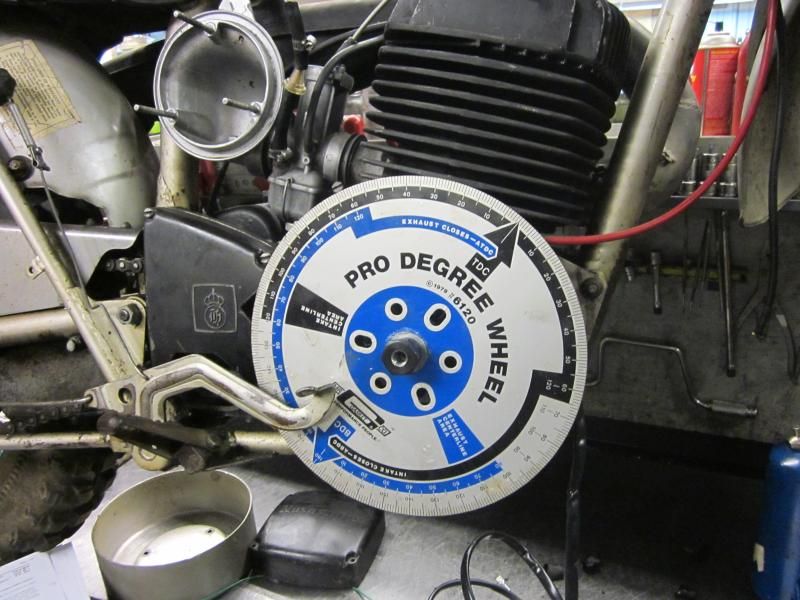FirstEliminator
Husqvarna
AA Class
Hey guys,
Tonight I started to dig into my 73 450wr a bit to make sure it will run for the ISDT reunion in August. I put in some fuel and started giving it some kicks. The bike has pretty good compression. Kick-kick-kick, never heard a pop. I pulled the plug, let it hang on the side and kick to check for spark. It would spark once for every three kicks or so. I put one of those adjustable spark testers on and if it was adjusted to where the gap was almost closed and it would spark with every revolution. I tried to clean the points through the slot in the flywheel, blew it out with compressed air and tried again. There really wasn't any improvement. Very weak spark. I then shortened the gap in the spark plug and installed it in the bike. I kicked it a few times but heard nothing. I thought about spraying a shot of starting fluid in the carb. But, I didn't have my riding boots and really don't want it to kick back while only wearing cheap slip-on shoes.
Not sure if it is a weak coil, points or condensor. Or something else? I have a feeling that the way I am going to approach this problem is with an MZB.
Any thoughts or quick ideas?
thanks,
Mark
Tonight I started to dig into my 73 450wr a bit to make sure it will run for the ISDT reunion in August. I put in some fuel and started giving it some kicks. The bike has pretty good compression. Kick-kick-kick, never heard a pop. I pulled the plug, let it hang on the side and kick to check for spark. It would spark once for every three kicks or so. I put one of those adjustable spark testers on and if it was adjusted to where the gap was almost closed and it would spark with every revolution. I tried to clean the points through the slot in the flywheel, blew it out with compressed air and tried again. There really wasn't any improvement. Very weak spark. I then shortened the gap in the spark plug and installed it in the bike. I kicked it a few times but heard nothing. I thought about spraying a shot of starting fluid in the carb. But, I didn't have my riding boots and really don't want it to kick back while only wearing cheap slip-on shoes.
Not sure if it is a weak coil, points or condensor. Or something else? I have a feeling that the way I am going to approach this problem is with an MZB.
Any thoughts or quick ideas?
thanks,
Mark








